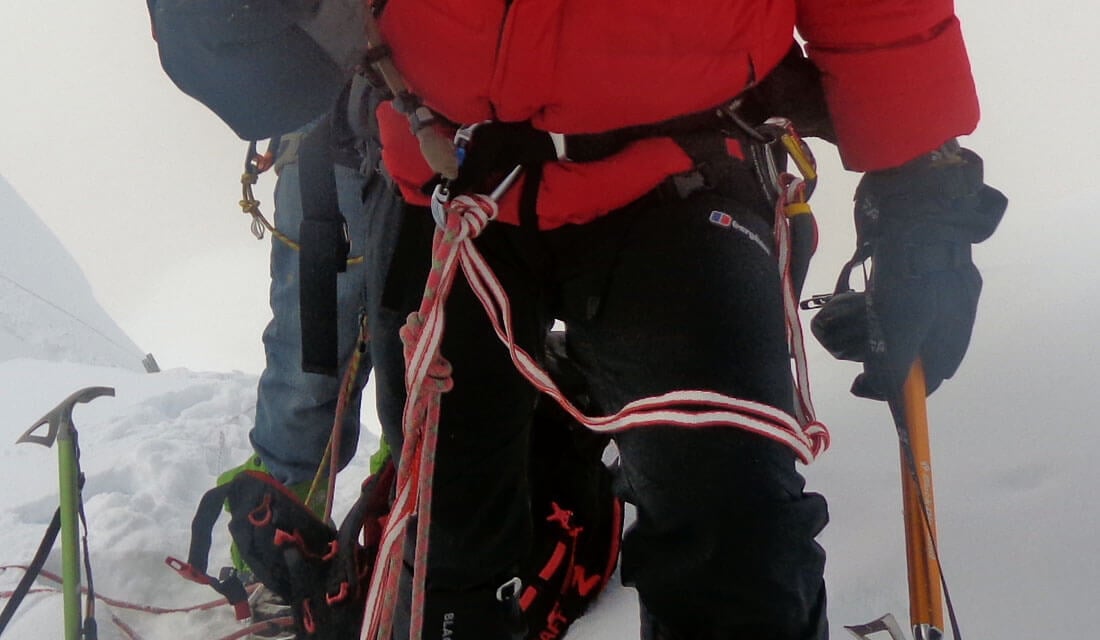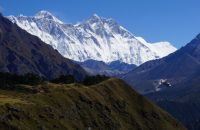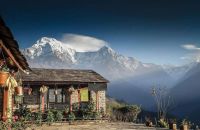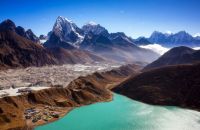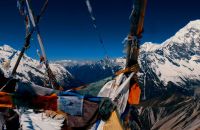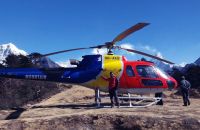Talk with our local travel specialist who can help organize your trip.
Top 10 Tips To Summit Island Peak
Do you want to upgrade yourself from avid trekker to mountaineer? Every mountaineer must have started their climb from a mountain. The first summit is always special and Island Peak Climb is perfect for beginners. It will be an unforgettable journey where you will be challenging yourself which will show you that you are capable beyond what you thought possible.
You can make your Island Peak Climb more pleasurable my knowing all the tips. In this article, we will shed light not only on the technical aspect of climbing but also tell you things you should incorporate while preparing physically and mentally. Prioritize your health. Mountain will always be there for climbing and when in good health climbing is incomparably joyous.
Not every climb is successful and every mountaineer has unsuccessful attempts; accepting this fact is important.
Make Your Summit Attempt
Island Peak is situated in the Sagarmatha National Park of Everest region. Although it’s local name is Imja Tse it is popular as Island Peak. An interesting anecdote is associated with its name Island Peak. When looking at Imja Tse from Dingboche, it appeared like an island in a sea of ice, so it was named Island Peak by the British expedition team members to Everest.
Observe sky glistening with stars, watch mesmerizing sunrises over Himalaya, breathtaking views of Everest and climb Island Peak. Your trail will take you amidst high snowcapped mountains, lush green hills, walk through dense forest, and many suspension bridges. It is more thrilling and adventurous to climb Island Peak than reading or watching videos.
Being prepared but expecting the unexpected is the best form of mountaineering practice as conditions change the quickest in the mountains. While preparing for the Island Peak climb, start amidst safety inside the gym and head outdoors to boost your confidence. Rise up to challenge of climbing Island Peak and add one more credit to your accomplishments. If you are gearing up for Island Peak or Imja Tse Climb, this is a must-read blog for a more enjoyable climb.
Rise up to the challenge of climbing Island Peak and add one more credit to your accomplishments. If you are gearing up for Island Peak or Imja Tse Climb, this is a must-read blog for a more enjoyable climb.
Table of Content
#1. Practice Climbing Techniques With Gear
#2. Start Exercising Months In Advance
#3. Break Into Your Mountaineering Boots At Earliest
#5. Acclimatization Is Crucial
#6. Climb Under Guidance Of An Experienced Mountaineer
#7. Good To Avoid Windy Winters And Snowy Early Spring
#8. Consult Your Doctor Before The Climb
Here are the Top 10 Tips To Summit Island Peak. These tips will help you make smart choices and prepare in advance before you get to the mountain.
#1. Practice Climbing Techniques With Gear

A gear-intensive activity is mountaineering. You can’t learn mountaineering just by reading blogs or watching videos; enrolling in a mountaineering class is a must. It requires an investment of both time and money. Learning rock climbing, ice climbing and other mountaineering skill will boost your confidence.
Learn safe travel techniques for rocky, snowy, and icy terrain. You will also require techniques to use crampons, ice ax technique, self-arrest technique, and others for climbing. It is advisable to get accustomed to walking in crampons and being confident in crossing ladders with crampons. While training for your Island Peak climb, prioritize abseiling. Boost your confidence by abseiling from height with harness and practice moving from one rope to another on a steep slope if possible.
Being able to use abseil with a figure of 8 and using Jumar device will aid in pleasure experience. Confident use of rope and harness will make a lot of difference. Learn to tie climbing ropes and some of the common knots used during Island Peak climbing are overhand, a figure of 8 and Italian Hitch knots.
Mountaineering isn’t a sport which you can learn today and go on climbing mountains tomorrow. This sport requires a lot of training and sound knowledge of using mountaineering gears. You need to have a good knowledge of mountaineering, use of gears and other mountaineering terms. Learn and do ample practice because poor skills will make you a liability to your mountaineering team.
#2. Start Exercising Months In Advance
Fitness plays a vital role in making Island Peak climbing an unforgettable memory to cherish for a lifetime. Indulge in both indoor and outdoor exercising while preparing for Island Peak Climb. Do endurance training to increase your stamina and it is best for better heart function and increase metabolism.
In a gymnasium, do cardiovascular training and maintain a steady pace but gradually increase your pace. It’s advisable to incorporate weight training as a part of your preparation. Additionally, core training will help you achieve stability and balance.
Further, start with a short hike once a week and increase your hiking duration with passing weeks. During long hikes don’t exhaust yourself take multiple breaks and keep yourself hydrated. Carry weight in your backpack while hiking and increase the duration of your hike. The longer hike will make the same backpack feel heavier. Training with a backpack is necessary when ascending a peak like Island Peak. To bring efficiency in your training you can also do a fitness test and practice accordingly. Always begin with a low-intensity workout and extend your sessions longer. You need to train your body gradually to be able to enjoy your upcoming adventure in the mountains.
#3. Break Into Your Mountaineering Boots At Earliest
Wearing a new pair of boots for climbing Island Peak must be strictly avoided at all times. Instead, break into your mountaineering boots at earliest. Mountaineering boots is one of the most important mountaineering items. These mountaineering boots are heavier and rigid in comparison with other boots so getting accustomed walking will take time.
Don’t settle for mediocre boots and make sure to get a pair of boots that are comfortable and fits your feet well. When your feet will be taking you everywhere in your trek and climb, sore feet and blisters are the worst nightmares. Also, make sure your boots provide warmth, are waterproof and tough enough to withstand rough terrain and harsh weather. Ensure that your boots feature welts to use crampons.
You will get a variety of mountaineering boots in the market depending upon the climb and difficulty level's technicality. Mountaineering boots are generally divided into three types single mountaineering boots, double mountaineering boots, and super gaiter mountaineering boots.
Single mountaineering boots are lightweight and performs best in hard rock and ice. It consists of a single upper boot and there isn’t any inner or outer lining that separate. Talking about double mountaineering boots they have inner and outer boots. You can take out an inner boot and dry it when not using them. Double mountaineering boots are generally heavy and perfect in extremely cold weather since they keep your feet warm.
Hybrid of single and double mountaineering boots are Super gaiter mountaineering boots. These boots perform better in cold and wet climates and are lighter in weight in comparison with double boots. It features nondetachable inner and outer boot. Outer boots provide extra warmth and weatherproofing.
#4. Right Gear Is Essential
The right gear is one of the important factors which can make or break your Island Peak climbing in Nepal. Mountaineering gear is available for hire in both Kathmandu and Chhukung village. Essential gears like mountaineering boots, clothing items like layers, down jackets and equipment like ice ax, crampons, and ropes are available.
You need to buy or hire personal gears and other gear items are usually provided by your trekking company. Moreover, you will get more options to choose gears in Kathmandu in comparison with Chhukhung. However, hiring gears in Chhukung will be cheaper than Kathmandu as you will be hiring for less number of days when hiring from Chhukung.
Wearing the right types of clothes will make a difference in your Island Peak Climb. Come prepared for different types of weather. Keep in mind that you are gearing up for ascend or descend and for the ever-changing weather on the summit. You need high-quality clothing items to withstand the harsh weather high in the mountains.
Stay away from cotton clothes at all times during your trek and climb. Cotton takes a long time to dry thus causes irritation. Instead, opt for merino wool or synthetic layers which promotes moisture wicking. The fabric with moisture wicking dries quickly and doesn’t let sweat saturate the cloth ultimately giving you a dry and non-sticky experience.
You will need a hooded jacket, fleece jacket, insulated down jacket, soft-shell pants, hard-shell waterproof pants, and insulated synthetic pants. Weather can get very windy on the summit so you need clothing for face and hands too. Pack gloves, insulated shell gloves, expedition mittens to keep your hands warm. Carry a buff, wool or synthetic hat, glasses, and headlamp too.
#5. Acclimatization Is Crucial
Your body’s natural ability to correct altitude sickness and the process of adapting to a reduced amount of oxygen at a higher elevation is acclimatization. Trekking high and sleeping low is the mantra while acclimatizing. Acclimatization can make a difference in making your Island Peak expedition successful or unsuccessful.
You will need an ample amount of time to acclimatize and minimize the effects of Acute Mountain Sickness. Each individual’s body reacts differently to an increase in altitude and is independent of one’s age, gender or physical condition.
Acute mountain sickness (AMS) is real and common at high altitude, minimized or avoided with proper acclimatization. Headache, fatigue, loss of appetite, nausea, shortness of breath and disturbed sleep are some symptoms of Acute Mountain Sickness (AMS). Acclimatizing or descending to a lower altitude is the basic treatment of AMS and mild AMS can be treated with some medicine.
Your body usually takes 1 to 3 days to acclimatize with the altitude. If your previous experience high in the mountains was not problemati, youu may have a similar experience if you acclimatize properly. Keeping yourself hydrated is important so drink plenty of water.
Our island peak climb includes a trek to Everest Base Camp as well to give you enough acclimatization days before your Island Peak Climb.
#6. Climb Under Guidance Of An Experienced Mountaineer

Island Peak 6189 meters high is a mountaineering peak that requires technical knowledge of mountain climbing. Island Peak is mostly climbed by the first time climbers who want to upgrade from an avid trekker or pursue mountaineering. The trail requires traversing crevasses via a ladder. Moreover, you will be using ropes abseiling and other gears which could be overwhelming for the first time summiteers.
Although climbing island peak involves technical climbing, it isn’t that difficult in comparison with other mountains making it apt for novice climbers. Climbing under the guidance of experienced mountaineers gives you a sense of security. Being honest about your health with your climbing leader, sharing your doubts and worries regarding the climb will help you ease your anxiousness and enjoy more.
Well-organized trip with strategized altitude gains each day, enough acclimatization days, practicing with gear before your climb will make a significant difference. Climb with veteran mountaineers who have turned the mountaineering dreams of many people into a reality. Enjoy once-in-a-lifetime experience of climbing Island peak, develop new friends and have new cultural experiences while your team makes all necessary arrangement of the climb.
Featured Trips
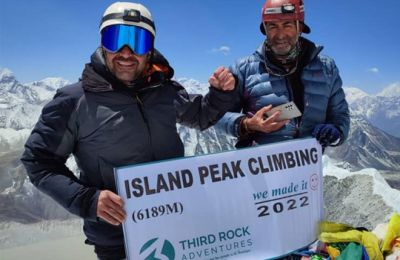
Island Peak Climbing - 15 days
Island Peak Climbing takes you to Nepal’s popular peak in the Everest region. Loved by novice as well as experienced climbers, the mountain offers you the ideal conditions to hone your climbing skills.
Inquire Now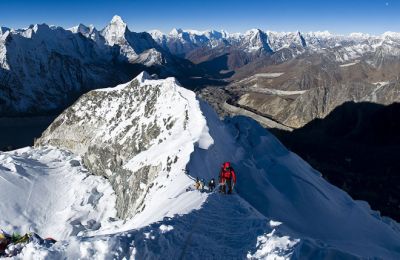
Island Peak Expedition from Chhukung - 5 days
Island Peak Expedition from Chhukung 4 days lets you climb Island Peak on a shoestring budget and pay only for the climbing portion. Trek independently and arrive at Chhukung, the starting point of your adventure.
Inquire NowWhere to travel next?
Get help from our travel specialists for holiday ideas that matches your interests.
#7. Good To Avoid Windy Winters And Snowy Early Spring
In an attempt to avoid the crowd many climbers come in early spring or push their climb towards winter. Early spring is characterized by snowfall high in the mountain. If you don’t mind chilly winter mornings and cold nights where mercury dips down below freezing point, you can consider climbing in winter.
Winter can get quite windy which will be an added challenge to overcome. Snowfall is common in early spring in the Himalayas of Nepal. So it would help if you came prepared not only with proper clothes but also for the added challenges in springtime.
Autumn and spring are the best time to visit Nepal especially for trekking and mountaineering. Autumn is the time when the monsoon clouds clear the sky and make the air crisp. It’s a beautiful time of the year when it’s neither too hot nor too cold. Weather condition high in the mountains is very unpredictable; one moment the sky is clear next moment it’s covered by clouds. However, autumn is the period when the weather is comparatively stable than other times of the month.
Spring is another best time of the year to trek and climb mountains. Rhododendron blooms and wildflowers decorate the trails adding color to verdant hills. The sky is mostly clear, but the chances of haze obstructing view cannot be avoided and might also rain. Spring and autumn have a high influx of trekkers and mountaineers since it’s the best time of the year.
#8. Consult Your Doctor Before The Climb
It is wise to have a medical checkup before you book your Imja Tse Climb. High altitude climbing involves risk so you need to be careful to mitigate possible risk. If you have any existing medical conditions, ask your doctor if they can cause any problems while trekking and climbing.
You are suggested to get a green signal to do Island Peak Climb from your doctor to minimize additional health issues. Also, ask your doctor to prescribe you medicines to prevent altitude sickness so that you can have it if you develop altitude sickness.
Further, you need to inform about your medical history, any recent injuries and current physical condition to your climbing team beforehand. Your climbing guide will take decisions in reference to your medical information if anything goes wrong in the mountains. Taking health precautions is extremely important to enjoy challenging island peak climb.
#9. Keep Extra Days In Hand
Contingent days are important while trekking and climbing in the Himalayas. There lies a chance of weather getting bad high in the Himalayas so you need to have extras days in hand. Flight cancellation due to bad weather or delay in climbing Island Peak or postponing the climb for the next day isn’t unheard of. You can relax and enjoy yourself more when you have additional days. If everything goes as planned, extra days can be utilized to explore the Everest region or do some interesting activities in Kathmandu or Pokhara.
#10. Be Mentally Prepared While Keeping A Positive Outlook
Adventure in the Himalayas is physically demanding but is equally about mental strength. Challenges will be a real testament to your mental strength. You will be exposed to the risk of falling rocks, avalanches, falling into crevasses, and technical knowledge mental strength will play a big role.
The way you handle forthcoming uncertainties in the Himalayas gives you a clear idea of your inner strength. Also, it will show you if mountaineering is your cup of tea or not! Mountaineering is a difficult adventure but is equally rewarding as well. The wonderful journey to the Himalayas, summiting mountains, facing your fears and overcoming them is an achievement in true sense.
Many factors come into play for a successful attempt. Not every climb is successful and every mountaineer has unsuccessful attempts; accepting this fact is important.
Featured Trips
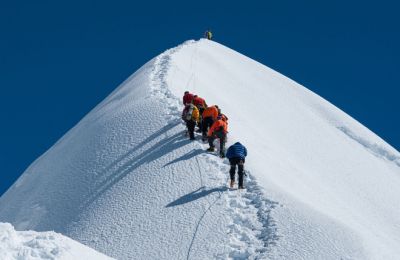
Island Peak Climbing with EBC Trek - 19 days
Island Peak Climbing and EBC Trek is for first-time climbers wishing for their first Himalayan summit. Hike to EBC and climb Island Peak safely within 19 days.
Inquire Now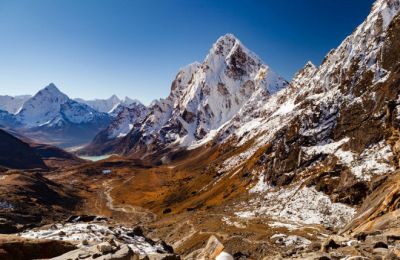
Everest 3 Passes Trek With Island Peak Climb - 21 days
Everest 3 passes trek with Island peak climb combines breathtaking adventures of Everest 3 Passes trek with the ascent of the Island Peak
Inquire NowWhere to travel next?
Get help from our travel specialists for holiday ideas that matches your interests.
Choose Your Trekking & Climbing Company Wisely!
High altitude mountaineering is a risky adventure so make sure you climb with an experienced team. Our team comprises of climbing guides with more than two decades of experience. Island Peak is mostly done by first-time climbers, making sure you ward off additional trouble by climbing with veteran mountaineers.
Check out our meticulously designed Everest Base Camp Trek with Island Peak Climbing. The package features adequate days for acclimatization, pre-climb training, and contingency days for a successful summit. Leave the trouble of arranging gear, necessary permits, and other arrangements while you make most of your Island Peak Climb. It will be a memory to cherish for a lifetime since it will be the first climb for most of you!
- Written by: Anjali Kansakar
Updated: Sep, 26, 2019

